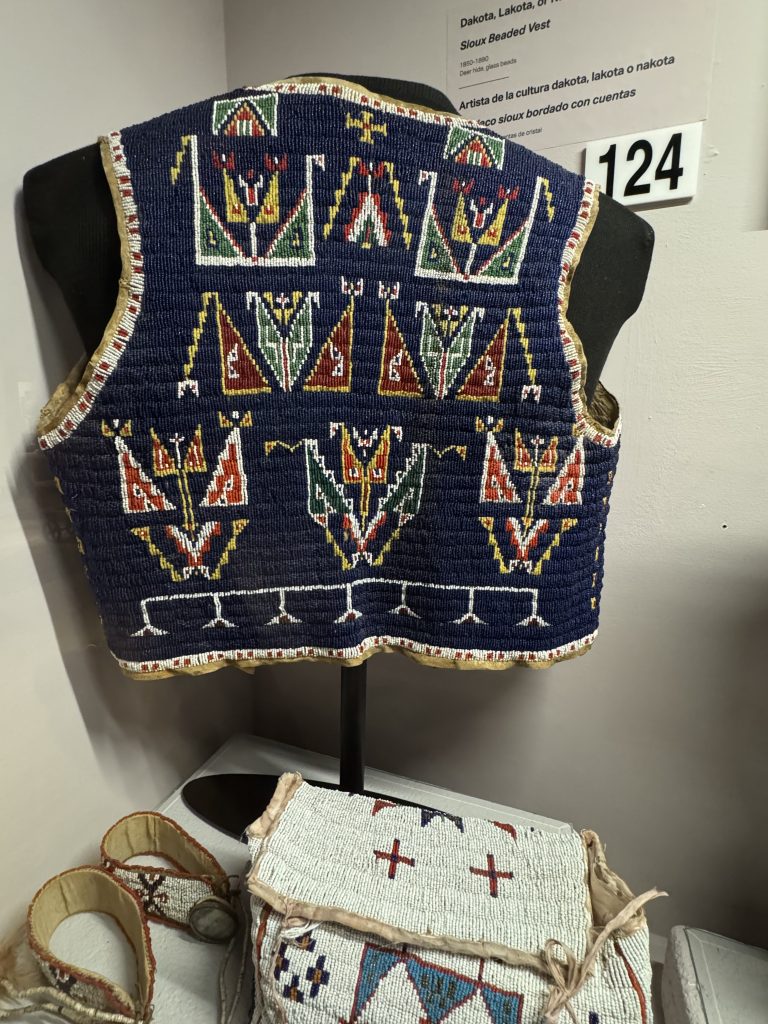It is definitely worth a trip to Bentonville, Arkansas, not just for a visit to Crystal Bridges Museum of Art (which, of course is astounding), but also for a chance to check out the Museum of Native American History (MONAH). This rather small, very user-friendly museum chronicles a 24,000-year journey, where visitors can experience the diverse Indigenous cultures of the Americas through prehistoric and historic art. The mission of the museum is to advance the understanding of human experience within these cultures and provide a space of explorative imagination for all who visit.

The journey through the museum starts with the friendly, albeit large, presence of “Tusker” the 12,000 year-old woolly mammoth skeleton in the entrance hall, and that begins the Paleo period (22,000-8,000 B.C.). What follows in the Paleo period is a huge variety of the history of hunting tools – many appearing to be arrowheads, but also including knives, and other hunting tools. Essential for hunting to survive, the tools were fashioned from flint and had handles of bone or wood. (We had no idea there were hundreds of types of these tools!).
Next up is the Archaic period (8,000-1,000 B.C.). During this time, the climate was warming, the large herd animals were becoming extinct, and the human population was rapidly increasing. Strides in hunting tools were made with the invention of the Atl-atl or spear thrower. Made of river cane for the long shaft, and a smaller foreshaft made of bone or wood, and flint for the spear, it was a multi-use tool.

The Woodland period is the next phase (1,000 B.C. – 900 A.D.). Known as the time of The Mound Builders, this time period was a prosperous one, where agricultural methods were invented and refined for the growing reliance on nuts and berries for sustenance. Their advanced methods of hunting and fishing allowed more time for village building, and ultimately burial ceremonies and burial mounds. This era is represented at the museum with pottery, woodworking, and advanced tools.
Now we find the Mississippian period (900 A.D. – 1450 A.D.). This is considered to be the beginning of the prolific creation of art by Native American peoples. The pottery and woodworking are more sophisticated, and effigies are used in many depictions of their natural world.

The Historic period is next in line (1450 A.D. – 1900 A.D.). This is widely known as the time of widespread contact between Native Americans and Europeans, with the exchange of materials and ideas through art, clothing, and artifacts. History tells us that disease was also imported, and it accounts for approximately 90 percent of the Native American population declining during this time. But, it is also the timeframe responsible for many of our most unique artifacts from the Native American population. This is where we find many of the items we recognize today, such as headdresses, moccasins, blankets, weavings, jewelry, and more. One of the most eye-catching and lasting pieces of craftsmanship is the practice of beading. Native Americans had been using beads of bone for thousands of years, but when the Europeans brought glass beads for trading, it changed the way beading was done. Using glass beads for vests, moccasins, and bags showed the wealth and status of the owner.

This easy-to-access and easy-to-digest museum is a delight, and we can highly recommend it for families. It is a quick, but thorough, glimpse into the Native American culture in the midwest. It is a lovely complement to the more comprehensive and larger Crystal Bridges. While in Bentonville, be sure to check out the square, which is the center of the action. The Walmart Museum is also not to be missed, a very quick and accessible look at the superstore through the years, including Sam Walton’s office as it was when he left it. For more information, visit monah.org, crystalbridges.org, and corporate.walmart.com/about/walmart-museum.
Featured in the November 15, 2025 issue of The Independent
By: Anne Potter Russ